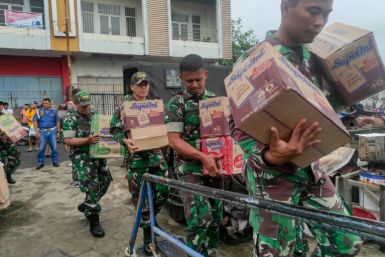Australia's Growing 'Ice' Problem Highlights Need For Coordinated Action

Australia has seen the “ice” epidemic affecting countless lives in the country in recent years. Health experts have warned of the drug’s harmful effects with long-term use such as psychosis and other psychological issues. The gravity of the growing drug problem was especially noted in the unclassified intelligence report of the Australian Crime Commission, or ACC, about the dangers of illicit drugs like ice or methylamphetamine in the country.
The government report, Illicit Drug Data Report 2013-2014, highlights the need for coordinated action to solve Australia’s ice problem. The ACC has found that Australian illicit drug users are willing to pay a high price for most drugs compared to other foreign users in international markets. Australia has become an attractive marketplace for the manufacture and importation of methylamphetamine.
“We are now seeing demand for methylamphetamine in areas where the drug has not previously been a significant issue. This includes urban and rural areas and disadvantaged communities where it is having a destructive impact,” said Australian Crime Commission Chief Executive Chris Dawson. According to the report, over 60 percent of Australia’s organised crime targets enjoy high profits from the drug trade.
The government has also found that organised crime groups have been combining other illicit drugs into methylamphetamine in an effort to increase addiction levels and maintain consumer drug base. Some illicit drugs often combined with ice include marijuana, cocaine and ecstasy. “While there is no doubt we are disrupting more criminal and detecting more illicit drugs than ever before, the illicit drug market remains the principle source of profit for organised crime and continues to be a key focus for law enforcement,” Justice Minister Michael Keenan said in a press release.
Rapid Expansion Of The Australian Drug Market
The Internet and the “dark Web” have allowed the rapid growth of the international drug market since users can access information about availability of illicit drugs online anywhere and anytime. Poly-drug use continues to be a feature of the Australian drug market. Organised crime groups capitalise on this trend by not only producing but also importing several kinds of drugs based on data found in the Organised Crime in Australia 2015 report.
Trends in drug use observed in Canada, Europe and the U.S. have emerged in the Australian drug market, according to the ACC report. Although cannabis or marijuana remains the most commonly used illicit drug in Australia, ice or methylamphetamine poses the highest threat. Australian authorities have detected large-scale importations of the drug at the country's borders.
In a survey of drug users by the National Drug and Alcohol Research Centre in the University of NSW in 2014, about 70 percent of respondents said they used any form of methylamphetamine in the last six months. The number of illicit drug users has been increasing in the annual survey since 2009.
“Anyone can get hooked on ice. It’s not just the socially disadvantaged that are suffering from ice intoxication and chronic ice use. I’ve been surprised actually by some of the patients that have come in and disclosed to me the problems that they’ve been having because of ice,” said Dr Stephen Priestley, the emergency services district director in Sunshine Coast, in a public statement for the National Drugs Campaign in Australia. The doctor has also appeared in a national advertising campaign for the government's National Ice Taskforce.
Response Calls For Coordinated Effort
A record 93,086 seizures in Australia were reported compared to 86,918 seizures 2012-2013, according to the ACC's Illicit Drug Data report. It also found that about 27.3 tonnes of illicit drugs were confiscated in 2013-2014 and law enforcement agencies made 110,000 record arrests. Authorities have also noted an increasing number of secret laboratories at 95.2 percent in the last 10 years.
Australia’s prime minister, Tony Abbott, has formed a national task force to help address the alarming drug problem. In a press release statement, Mr Abbott said the government will be working with state and local governments to form a National Ice Action Strategy to address the problem. The prime minister believes the drug is destroying the lives of its illicit drug users and their families. Keenan and the Assistant Minister for Health Fiona Nash will manage the national taskforce and lead the response of the federal government. Ken Lay, the former chief commissioner of Victoria Police, has been named head of the taskforce.
The Australian Crime Commission’s report reiterated that law enforcement and government agencies are committted to actively respond to threats brought by organised crime groups. Collaboration between the government and the private sector is highly encouraged to strengthen the response against the escalating drug problem in Australia.
The ACC suggests that the fight against organised and serious crime only be effective if law enforcement agencies have the ability to operate in an interconnected global environment. Australia’s participation in information-sharing activities can mitigate targeted global law enforcement responses. The country’s continued involvement in global forums to exchange information will help improve the response to organised crime and drug trafficking. The commission believes the battle against ice is for everyone in the country and it is only through coordinated action that the problem can be solved.
To report problems or leave feedback on this article, contact: r.su@ibtimes.com.au.






